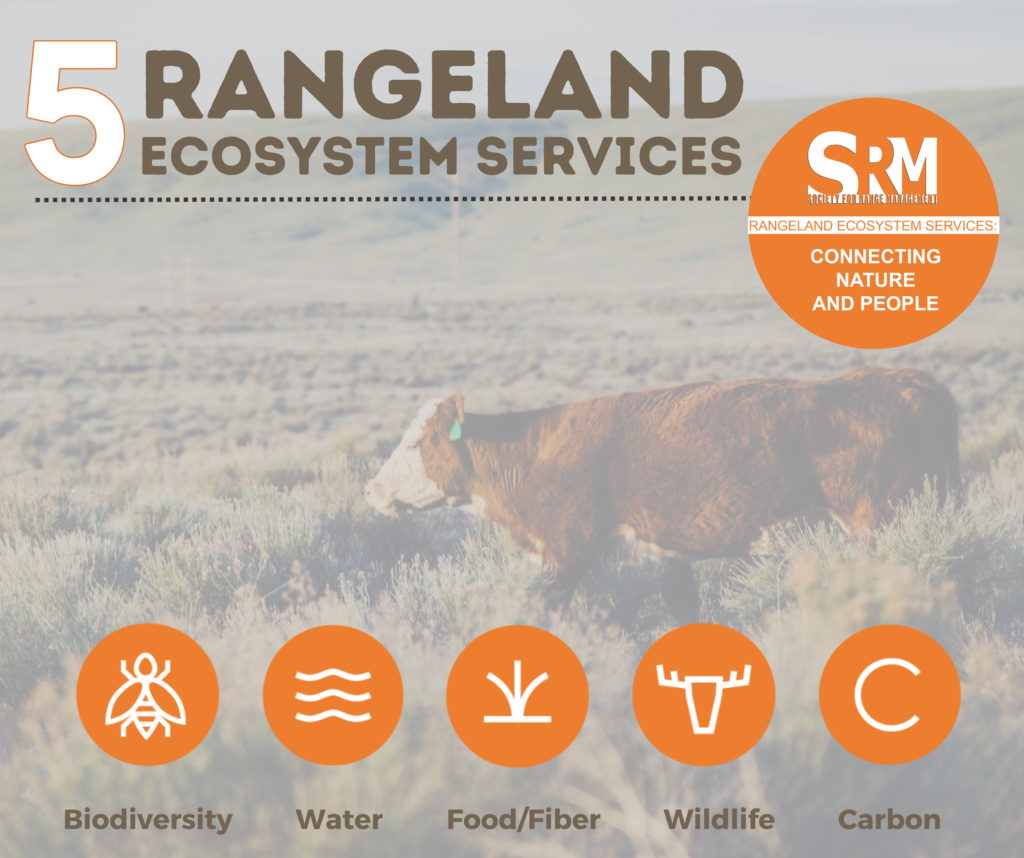Society for Range Management Further Defines Rangeland Ecosystem Services

As “ecosystem services” becomes a more common term heard amongst farmers, ranchers, and range stewards of all kinds, the Society for Range Management (SRM) set out to further define this broad term and how it applies to rangelands. In a report released today titled, “Rangeland Ecosystem Services: Connecting Nature and People,” a SRM task force assessed five rangeland service areas including food and fiber, water, carbon, biodiversity, and wildlife.
“We wanted to create a resource that was informative, science-based, and would benefit not only SRM, but anyone interested in the diversity of ecosystem services produced by rangelands,” Texas A&M Center for Grazinglands and Ranch Management Director Jeff Goodwin said. “We assembled an equally diverse team of scientists, conservationists, and ranchers that all worked collectively to highlight the services and, importantly, outline considerations for their continued stewardship.
For each topic, the report describes the relevant services and benefits; current threats to the service; ways in which human management can enhance, sustain, or erode the service; and opportunities for managers to obtain material benefits from supporting the service. The report illustrates how the three “main facets” of rangeland management – avoiding conversion, restoration of degraded lands, and adaptive management – can be applied to maintain or enhance ecosystem services and their benefits.
“Active rangeland stewardship is often essential for maintaining and enhancing the ecosystem services provided by resilient rangeland social-ecological systems,” the report reads. “In other words, not only do benefits flow from nature to people, but also from people to nature.”
The report will serve as a guiding outline for SRM’s role in the greater conversation regarding ecosystem services. It is also a useful tool for educating stakeholders, policymakers, and others about the critical function of resilient rangelands in the beneficial connection between people and nature.
“I hope this report will serve as a useful jumping off point not only for SRM members, but also many others interested in this topic,” Agricultural Research Service scientist Lauren Porensky said. “Although our report only scratches the surface for many of these complex topics, we hope to provide a synthetic perspective that emphasizes the active role of rangeland stewards and rural communities in the rangeland ecosystem service story.”
The full report can be viewed below. Additionally, in a special episode on The Art of Range Podcast, Washington State University Extension rangeland specialist Tip Hudson discusses the report in detail with Task Force Co-Chairs Goodwin and Porensky. Listen to Art of the Range Episode 111 here. Follow Society for Range Management on social media to learn and share facts from the report during the upcoming ecosystem services campaign as well.
